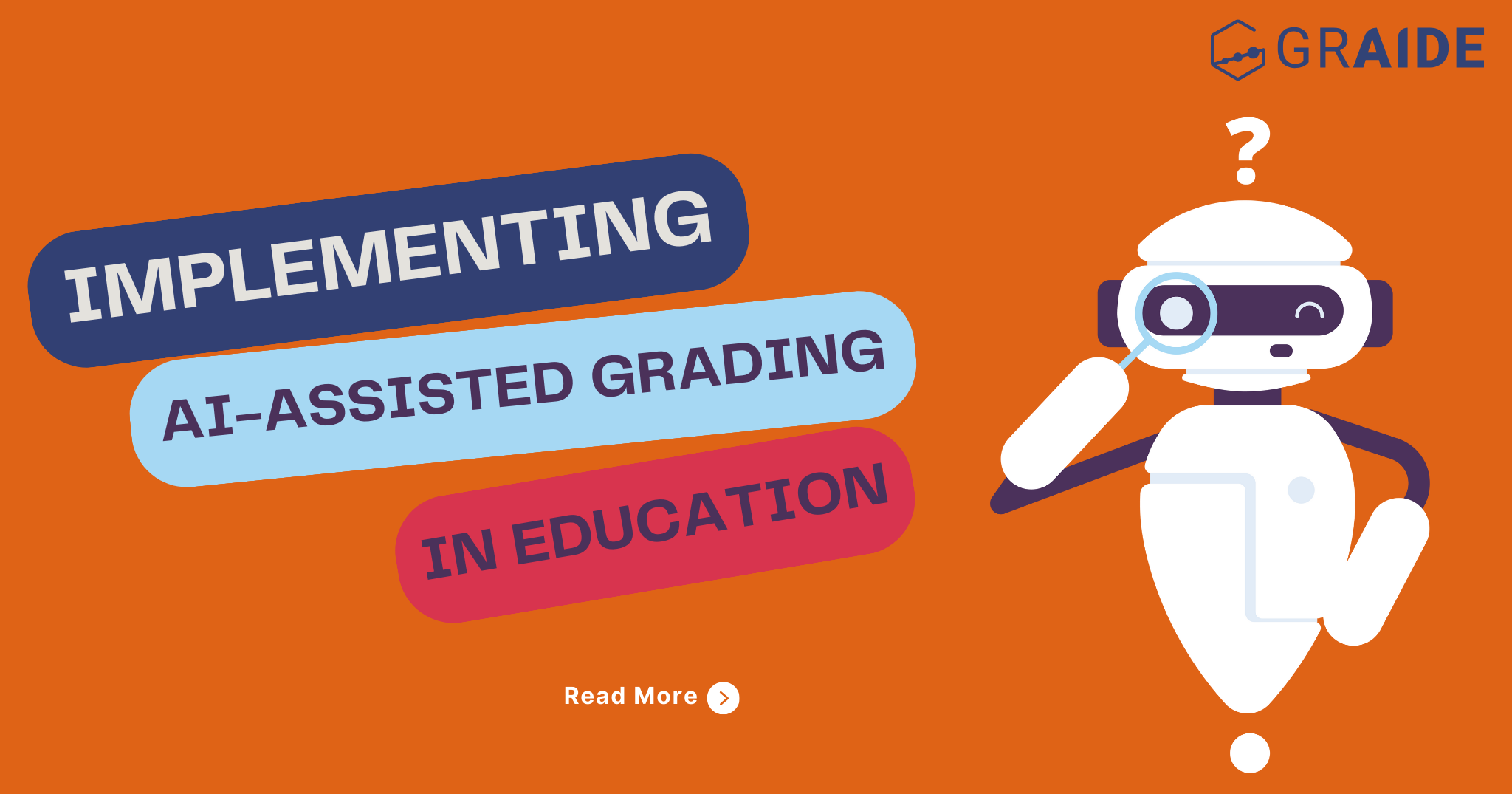Corporate learning (apprenticeships/FE) providers looking to integrate AI grading into their programmes
More and more corporate learning (apprenticeships/FE) providers are looking to integrate AI grading into their programmes.
Automation is your friend, especially AI-assisted learning and grading. We’re all trying to do more with less, and the pressures on providers are undeniable.
AI equals impressive scalability and greater efficiency, along with data analytics and progress tracking insights which enable educators to identify individual learning needs and analyse wider trends.
And all that comes with less admin!
So, to help you with decision-making, let’s look at the whys and wherefores, and the what, where and why of of AI grading, along with some of the pitfalls.
Some may surprise you.
Start with your why
When looking at AI tools for grading, start with your rationale, or clearly defined educational goals based on sound pedagogy. That’s your basecamp or starting point, and will help you focus on the what.
Decide what you need and what you can live without, choosing products or providers accordingly. Will new tech seamlessly integrate with existing learning management systems (LMS) such as Canvas, Blackboard, or Moodle? Most often they do!
This matters when money is a factor – when is it not!
When – budget in terms of time as well as money
Budget money, yes, but also time – the when matters.
Develop a comprehensive schedule for selecting, implementing, and evaluating AI grading systems. Timeframes – with clear deadlines – concentrate the mind and help overcome analysis paralysis or the brain fog that comes with too much choice.
Rather than implementing all the technology at once, you could look out for trial periods or the possibility of pilot schemes, trying out new tech without excessive risks or costs.
Starting small and scaling in stages allows you to iron out issues as they emerge and gather feedback before expanding implementation.
The who – engage stakeholders from the outset
Involve teachers, students, parents, and administrators from the get-go. Gather their input and ideas. This is the very best way to engage stakeholders early on and will inform how you do things. Wide-ranging consultation will illuminate the decision-making stage, ensuring that the technology aligns with stakeholders’ needs and expectations.
This is also the perfect time to communicate the undoubted benefits that AI brings.
Delegating marking and data entry to AI isn’t a hard sell!
Pitfalls to avoid… Here be dragons…
Okay, let’s not be too dramatic. Implementing new technology is hardly uncharted territory, but people we speak to and work with every day in the education and the corporate training space return to certain key themes.
When implementing AI-assisted grading, watch out for when…
… Communication breaks down
Fired by good intentions, some start well, but then life gets in the way. Keep communicating. For one, maintaining communication means maintaining momentum.
Surprisingly many forget to celebrate successes. Natural problem-solvers, we stop noticing what works – or take them for granted. Highlight and celebrate the successes and achievements resulting from using AI grading, because it may not be apparent to everyone, even when new tools are saving so much time.
Positive reinforcement also encourages teachers and students to embrace change and it can help those who are struggling with new tech.
People get left behind
As with consistent communication, many provide early training but then don’t review or top it up, something we touched upon at our round table in March this year.
Stephen Webb, Head of Technology Enhanced Learning at Portsmouth University, heads up the operational side of a section that supports, develops and investigates learning technologies. Though excited by the undoubted potential of AI, he talked about the challenges of finding the time to train staff when they are “time-poor”.
But that can also be a motivator. Used well, artificial intelligence can be the intelligent assistant so many of us need when our time is limited.
Tech mentors or IT champions can lead the way, showcasing the technology in action, sharing best practices, and troubleshooting when need be. Having a responsive support system, including a tech team or helpdesk which responds to problems swiftly, is imperative.
Online forums can also help ensure that no one suffers in silence, leaving the tech to gather dust in a drawer!
It’s worth remembering the importance of accessibility and equity and the need, in some instances, to bridge the digital divide. Make sure that all students have equal access to the technology, both in school and at home. Furthermore, consider how best to support students with varying levels of tech proficiency.
The complacency trap
Be mindful of the inflexibility trap, or an unwillingness to adapt.
Continually assess the impact of the technology on teaching and learning.
Solicit feedback and collect data through online surveys such as Google Forms, SurveyMonkey and suchlike.
Be prepared to adapt and evolve as needs and circumstances change.
Flexibility is key to long-term success. The technology is there to support staff and students, to oil the wheels, not clog them up. Stay focused on enhancing the educational experience for students while supporting teachers in their roles.
Final thoughts
I count myself among those early adopters of tech. I remember my excitement when an uncle handed down to me a copy of Super Mario Bros 3 on the NES (Nintendo Entertainment System).
I also realise that we sometimes forget our interests aren't shared by everyone! The curse of knowledge means an (occasional) failure to see the other side: not everyone is enamoured with or at ease with the tech as we are. Empathy is important.
And incorporating new tech begins, first and foremost, with considering what works for all educators and learners, whether that be in a corporate, further, or higher education setting.
Further reading
Benefits of using a Digital Grading Platform to Evaluate Student Learning (graide.co.uk)
For Higher Education
.png)
Best practices for implementing and using AI-powered assessment tools in higher education


